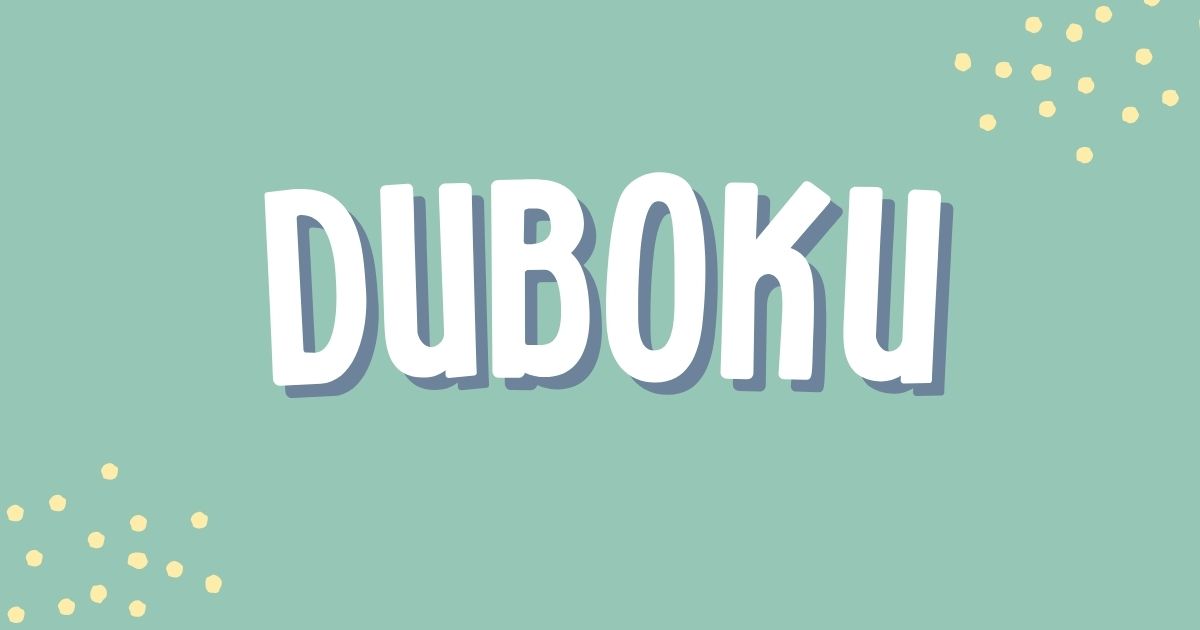General
English to Bosnian: Your Complete Translation Guide

With over 2 million native speakers, Bosnian is one of the official languages of Bosnia and Herzegovina. As businesses grow globally and travel increases, the need for accurate English to Bosnian translation is more relevant than ever. Whether you’re planning a trip, doing business, or connecting with Bosnian friends or family, bridging the language gap is essential.
Understanding the Bosnian Language
Bosnian is a South Slavic language closely related to Serbian and Croatian. It uses both Latin and Cyrillic alphabets, though Latin is more common. With shared roots and unique expressions, understanding its linguistic characteristics is the first step toward accurate translation.
Common Challenges in Translation
One of the biggest hurdles in translating from English to Bosnian is dealing with sentence structure. Bosnian tends to have flexible word order and cases that affect meaning. Also, English idioms often don’t have direct Bosnian equivalents, making literal translation a no-go.
English Grammar vs. Bosnian Grammar
Grammar differences are often the trickiest part. English relies heavily on word order, while Bosnian uses inflections to determine meaning. For example, Bosnian has seven grammatical cases, each changing the word’s ending based on its function in the sentence—something English doesn’t do.
Vocabulary Differences and Nuances
While some English words translate easily, others have several Bosnian counterparts depending on context. Take the English word “time.” In Bosnian, it could be vrijeme (weather/time in general), satnica (schedule), or vrijeme trajanja (duration). Context always matters.
Formal vs. Informal Language
In Bosnian, formality is important. The formal “you” (Vi) is used in professional or respectful settings, while the informal ti is used among friends and family. Translating from English, which uses “you” for both, requires cultural awareness.
Common Phrases in English to Bosnian
Simple everyday phrases are a good place to start:
Hello – Zdravo
Thank you – Hvala
How are you? – Kako ste? (formal) / Kako si? (informal)
I love you – Volim te
Goodbye – Doviđenja
These help in daily conversation and build a basic foundation.
English to Bosnian in Travel Communication
If you’re visiting Bosnia and Herzegovina, knowing a few travel-specific phrases can go a long way. Think taxi rides, hotel check-ins, or ordering food. Phrases like “Gdje je toalet?” (Where is the toilet?) or “Koliko košta?” (How much does it cost?) are extremely handy.
Translation for Business and Legal Use
Business and legal translation demands precision. A mistranslated contract can lead to misunderstandings or even lawsuits. For these, always rely on certified translators who are fluent in legal and business terminology in both English and Bosnian.
Tools for English to Bosnian Translation
There are plenty of tools to help you out:
Google Translate – Fast and free, but not always accurate
DeepL Translator – Offers better sentence flow and tone
Linguee – Great for context and example sentences
Bosnian-English Dictionary apps – Handy on the go
But remember, these tools work best for short texts, not nuanced documents.
When to Use Human Translators
While machines are getting better, they can’t replace human touch—especially when tone, context, and emotion matter. A professional human translator can localize your message, ensuring it resonates with a Bosnian-speaking audience.
Learning Bosnian for Better Translation
If you’re serious about mastering translations, consider learning the language. Apps like Duolingo, Babbel, or even hiring a tutor can help. The more you understand the culture behind the language, the better your translations will be.
Cultural Context in Translation
Bosnian culture deeply influences the language. Religion, history, and regional dialects affect how people speak. For instance, certain words may be common in Sarajevo but not in Mostar. A culturally sensitive translation avoids offending or confusing the reader.
Translating English Idioms into Bosnian
Idioms are expressions that don’t make literal sense when translated. “Break a leg” in English won’t make any sense in Bosnian unless you explain its meaning. Instead of direct translation, use local equivalents or rephrase the sentence entirely.
Best Practices for English to Bosnian Translation
Here are some quick tips:
Always check the context before translating a word
Avoid word-for-word translations
Keep sentences short and clear
Use native speakers for proofreading
Know your audience—formal or casual
These practices help you avoid embarrassing mistakes and ensure clarity.
English to Bosnian in Media and Entertainment
Subtitles, dubbing, and scripts often need translation. But it’s not just about words—it’s about matching tone, humor, and emotion. A joke in English might fall flat in Bosnian if not adapted carefully.
Digital Marketing in Bosnian Language
If you’re targeting Bosnian-speaking customers, your website, ads, and social media must be in fluent, culturally relevant Bosnian. This helps build trust and improve user engagement.
Using English to Bosnian Translation in Education
Students studying abroad or working on international research often need documents in both languages. Academic translation should maintain original intent while respecting technical terms and educational standards.
Conclusion
Translating from English to Bosnian isn’t just swapping words—it’s about conveying meaning, emotion, and context. From daily phrases to formal documents, it’s essential to consider grammar, cultural nuances, and tone. Whether you use tools, learn the language, or hire a pro, the key is to respect both languages equally. Do it right, and you’ll build stronger connections and avoid misunderstandings.
FAQs
What is the best app for English to Bosnian translation?
DeepL and Google Translate are great starting points, but for better accuracy, consider using both or consulting a human translator.
Is Bosnian difficult to learn for English speakers?
It can be challenging due to grammatical cases and different sentence structure, but with consistent practice, it’s very doable.
Can I use Google Translate for business documents?
It’s not recommended. Machine translations can miss context, which is crucial for legal or professional documents.
Are Bosnian and Serbian the same language?
They are mutually intelligible but have different vocabulary, pronunciation, and cultural usage. Always tailor translations to the intended audience.
What’s the difference between ti and Vi in Bosnian?
Ti is informal and used with friends or family. Vi is formal and shows respect, often used in professional or polite conversations.
General
Total Sportek Live Streaming Guide for Sports Enthusiasts

Total Sportek is a popular online platform for streaming live sports events from around the globe. It offers free access to football, boxing, Formula 1, UFC, NBA, cricket, and more, making it a go-to destination for fans who want real-time sports content without a cable subscription. With simple navigation and links to multiple streaming sources, it’s one of the most searched websites by die-hard sports lovers.
A Gateway to Worldwide Sports
Total Sportek covers a wide range of sports, from mainstream leagues like the English Premier League and NBA to niche competitions like ATP Tennis and MotoGP. Whether you’re into European football or American wrestling, this site provides direct links to live coverage, schedules, and updates in one place.
User-Friendly Interface
One of the major highlights of Total Sportek is its simple and intuitive layout. The homepage categorizes events by sport, date, or popularity, making it easy to find your match of interest. With minimal ads and lightweight design, the platform loads quickly even on slower internet connections.
Free Access Without Subscriptions
Unlike premium services such as ESPN+ or DAZN, Total Sportek doesn’t require users to sign up or pay. It offers all links and updates without creating an account. That said, the site typically redirects users to third-party streaming sources that may display occasional ads or require one-time permissions.
Live Football Streaming
Football is the backbone of Total Sportek’s content. The site features live streams of major leagues like the Premier League, La Liga, Serie A, Bundesliga, and UEFA Champions League. It also includes schedules, kick-off times, and team lineups to give fans full match-day coverage. For die-hard soccer enthusiasts, Total Sportek is often bookmarked as the ultimate live football hub.
UFC and Boxing Matches
Combat sports fans also benefit from Total Sportek’s comprehensive coverage. UFC main cards and Pay-Per-View boxing events are streamed through various mirrors. Whether it’s a Tyson Fury bout or a UFC Fight Night, you can expect working links just before the event starts.
Cricket and IPL Coverage
Cricket fans won’t be disappointed either. Total Sportek covers international matches, T20 leagues, and even domestic cricket like the IPL and BBL. With real-time links, ball-by-ball commentary, and match previews, it’s easy to stay updated on your favorite teams and players.
Formula 1 and MotoGP Streams
For motorsports enthusiasts, Total Sportek provides links to live streams of Formula 1 races and MotoGP events. From practice sessions to race-day excitement, you can follow every turn and overtake with ease.
NBA and American Sports
Total Sportek has been expanding its reach into American sports like the NBA, NFL, and NHL. Live links are added for regular season and playoff games, and while the availability might not be as consistent as for football, it’s steadily improving.
Real-Time Sports Schedules
An underrated feature of Total Sportek is its real-time scheduling. You can view all the day’s matches or events in one place. This is particularly useful during weekends or busy sports seasons when multiple games overlap. Users can plan their viewing by checking match times, broadcasters, and available streams.
Is Total Sportek Legal?
Technically, Total Sportek does not host the streams but rather provides links to other sources. This puts it in a legal gray area. In many countries, accessing or sharing unofficial streams of copyrighted sports events may violate laws. While users rarely face legal consequences, it’s wise to use a VPN for privacy and check the laws in your region.
Using a VPN for Safe Access
To enjoy Total Sportek safely, many users rely on Virtual Private Networks (VPNs). VPNs mask your IP address and prevent your internet provider from seeing the sites you visit. This adds a layer of protection, especially when accessing unofficial content.
Best Browsers and Devices for Streaming
Total Sportek works best on Chrome or Firefox browsers with pop-up blockers enabled. It’s also mobile-friendly, meaning you can enjoy matches on your smartphone or tablet without needing a dedicated app. Smart TVs with browsers can also access the site, turning any living room into a mini sports arena.
Domain Changes and Working URLs
Due to copyright crackdowns, the official domain for Total Sportek may occasionally change. If the site becomes inaccessible, users typically search for mirror links or community posts on Reddit to find the updated domain. Bookmarking a few trusted sources can help ensure you never miss a match.
Final Thoughts
Total Sportek has become a beloved platform for millions of sports fans who want free, fast, and reliable access to live games. While not officially licensed, its convenience and breadth of coverage continue to attract new users daily. With basic precautions and safe streaming practices, Total Sportek can be a solid companion for any sports enthusiast.
Conclusion
If you live for game nights and adrenaline-pumping matches, Total Sportek is worth checking out. With real-time updates, a clean interface, and links to a wide variety of sports, it’s a treasure chest for fans who don’t want to miss a second of the action. Just be sure to stream safely and stay updated on working domains.
FAQs
Is Total Sportek really free to use?
Yes, you can stream sports events without paying or signing up.
What sports can I watch on Total Sportek?
You can find football, UFC, boxing, cricket, NBA, F1, and more.
Do I need a VPN to use Total Sportek?
While not required, using a VPN can enhance privacy and unblock restricted content.
Does Total Sportek have a mobile app?
No, but the website works well on both Android and iOS browsers.
Is Total Sportek safe from viruses and scams?
Total Sportek itself is safe, but be cautious of third-party streaming sites it links to—always use antivirus protection and avoid unnecessary downloads.
General
Duboku Streaming Guide for Unlimited Asian Entertainment

Duboku is an online streaming platform widely known for its vast collection of Asian dramas, movies, and variety shows. It caters especially to fans of Chinese, Korean, Japanese, and Thai content. With user-friendly navigation and free access to an impressive library, Duboku has quietly built a loyal global following.
A Growing Hub for Asian Drama Lovers
In recent years, Duboku has become a staple for those seeking high-quality drama content without subscription fees. Whether you’re into historical epics, modern romantic comedies, or thrilling action dramas, the platform delivers something for everyone. This free alternative competes with major services like Viki, iQIYI, and WeTV by providing unblocked access with English subtitles.
Free Streaming Without a Subscription
One of Duboku’s major attractions is that it doesn’t charge users for content. Unlike paid services that require monthly fees, Duboku offers drama lovers full access without the hassle of subscriptions. This convenience makes it a go-to platform for students, international users, or fans looking to explore Asian content without financial commitment.
User Interface and Navigation
Duboku’s interface is minimalistic and easy to use. Categories such as “New Releases,” “Trending,” and “Top Rated” help users quickly find what they’re looking for. A convenient search bar and genre filters further enhance the user experience. Even beginners can start watching within seconds of visiting the site.
Massive Library of Chinese Dramas
Duboku is particularly strong when it comes to Chinese dramas (C-dramas). From palace intrigues like The Story of Yanxi Palace to modern tales like Go Ahead, it houses titles across all genres. Historical, fantasy, romance, and slice-of-life dramas are all well-represented, appealing to both newcomers and seasoned fans of Chinese culture.
K-Dramas for Global Audiences
Korean dramas (K-dramas) are some of the most-watched shows on Duboku. The platform frequently updates its library with the latest releases, including global hits like Crash Landing on You and Business Proposal. Subtitles are generally well-synced, making it easy for non-Korean speakers to enjoy.
Japanese and Thai Dramas Also Available
For those interested in J-dramas and Thai series, Duboku has a curated selection of both. Popular Japanese series such as 1 Litre of Tears and Thai dramas like 2gether: The Series are accessible and translated for a global audience. While the J-drama and Thai library may not be as large as the Chinese and Korean sections, it’s steadily expanding.
High-Quality Streaming and Fast Loading
Duboku streams are generally high-definition, with multiple quality options for different internet speeds. Most episodes load quickly with minimal buffering, even on slower connections. The ability to toggle between different servers ensures smoother playback if one source is lagging.
Subtitle Options for Global Users
Most of the content on Duboku comes with English subtitles. Some shows also feature subtitles in other languages such as Arabic, Spanish, and Vietnamese. This inclusive approach helps make the platform accessible to a broad range of users worldwide.
No App, But Mobile-Friendly Website
Unlike platforms like Netflix or Viu, Duboku doesn’t offer a dedicated mobile app. However, its website is mobile-optimized and runs smoothly on smartphones and tablets. This makes it easy for users to watch on the go without needing to download anything.
Risks and Legal Considerations
While Duboku offers free and convenient streaming, it’s important to understand that it may not always operate within legal boundaries. The platform does not typically hold official licenses for the content it streams, meaning users may be exposed to potential copyright issues. Using ad blockers and VPNs can reduce some of the associated risks, but it’s always best to stay informed about your country’s regulations.
Safe Streaming Practices
Users are advised to use a trusted antivirus and avoid clicking on pop-up ads. Although Duboku is generally safe, occasional redirects or malicious ads can appear. Always ensure you’re on the correct URL and avoid downloading suspicious files. Browser protection and VPNs can help mitigate some of these issues.
No Need for Account Registration
One of Duboku’s most appealing features is that you don’t need to create an account to stream. This means no passwords, no personal information, and no risk of your data being shared or leaked. Simply click and watch. However, it also means you can’t save your watch history or create a watchlist.
How Duboku Compares to Other Streaming Sites
Compared to premium platforms like Netflix or Viki, Duboku lacks official licensing but offers similar content without the paywall. In contrast to illegal torrent sites, Duboku streams content without requiring downloads, lowering the risk of malware. When weighed against other free streaming options, Duboku stands out for its smoother UI and reliable subtitle quality.
Community and Fan Culture
Duboku doesn’t have built-in community features like reviews or comments, but its popularity has spawned several fan forums and Reddit threads where users discuss episodes, share recommendations, and provide updates on new releases. These spaces often help viewers navigate Duboku more efficiently and discover hidden gems.
Accessibility Around the World
Duboku is accessible in most countries without geo-restrictions. However, some internet providers may occasionally block it. In such cases, users commonly use VPNs to bypass restrictions and gain uninterrupted access to the platform’s content.
Content Update Frequency
The platform updates its library regularly, often adding new episodes within hours of release in their original countries. This near-real-time availability is a big reason why fans stay loyal to the platform. Duboku works hard to stay relevant by offering the latest shows and not just classic or older content.
Minimal Ad Disruption
Though Duboku is a free site, ads are minimal compared to other free platforms. It typically uses banner ads or brief pop-ups that don’t interrupt streaming. While ads can be annoying, they’re a small price to pay for free content and can be easily ignored with an ad-blocker.
Tips for First-Time Users
If you’re new to Duboku, start by checking the “Top Rated” or “Trending” section. Use a VPN if your country restricts access, and always use a secure browser. Bookmark the current working domain as Duboku URLs can change due to copyright takedowns.
Final Thoughts
Duboku is a haven for Asian drama lovers who want to explore a wide variety of content without paying a dime. From its expansive library and fast streaming speeds to its multilingual subtitle support and easy access, Duboku offers immense value. However, users should stay aware of the platform’s legality and take basic precautions for a safe viewing experience.
Conclusion
Duboku might not be a household name like Netflix, but in the realm of Asian entertainment, it’s a quiet powerhouse. With a rich, growing library and a commitment to making content accessible globally, it continues to capture the hearts of drama fans. It provides a free window into cultures, stories, and worlds that might otherwise be out of reach—no subscriptions, no fuss, just endless binge-worthy content.
FAQs
Is Duboku free to use?
Yes, Duboku is completely free. You don’t need a subscription or account to stream its content.
Is it safe to watch on Duboku?
Generally, yes. Just avoid clicking on pop-up ads and make sure you use antivirus software or a secure browser.
Does Duboku have an app?
No, Duboku doesn’t offer a mobile app, but the website works smoothly on all mobile browsers.
Are there English subtitles available?
Yes, most content on Duboku includes English subtitles, and some even support multiple languages.
can I download shows from Duboku?
Duboku does not officially support downloading. It’s primarily a streaming platform, so you’ll need an internet connection to watch content.
General
UTI Blackboard Portal: Complete Guide for Students

UTI Blackboard is the online learning platform used by Universal Technical Institute (UTI) to provide students with digital access to course content, assignments, grades, and instructor communication. This cloud-based platform streamlines the learning process for students enrolled in technical programs like automotive, diesel, welding, and CNC machining.
Purpose of UTI Blackboard
The core purpose of UTI Blackboard is to bring all academic resources into a single digital hub. It helps students stay organized, track progress, and engage with lessons from any internet-connected device. With increasing reliance on blended and remote learning, the platform plays a crucial role in the modern classroom.
Accessing the UTI Blackboard Login Page
Students can access UTI Blackboard by visiting the official login page provided by the institution, usually in the format https://learn.uti.edu. From there, users enter their UTI student credentials—username and password—to enter their dashboard.
Login Instructions for New Users
If you’re a new student at UTI, you’ll receive login credentials during orientation or through email. Here’s a step-by-step guide:
Visit the UTI Blackboard login page.
Enter your username (usually your student ID or UTI email).
Type in the default or updated password.
Click “Login” to access your courses.
Students are encouraged to change their passwords after the first login for security purposes.
Recovering Forgotten Passwords
Forgetting your Blackboard password isn’t the end of the world. Simply click on the “Forgot Password” link found on the login page. Follow the prompts to reset your credentials using your registered email. You may also contact UTI’s technical support for additional help.
Navigating the Blackboard Dashboard
Once logged in, students are welcomed by a dashboard that displays course tiles, announcements, upcoming due dates, and recent activity. The navigation menu typically includes:
My Courses
Calendar
Messages
Grades
Tools
Account Settings
This dashboard gives an overview of academic responsibilities and keeps students on top of their tasks.
Viewing Assignments and Submitting Work
Assignments can be accessed through each course tile. Once inside a course, you’ll see a list of lessons, homework tasks, quizzes, and deadlines. Submitting work is straightforward—click the assignment, upload your file, and hit “Submit.” Blackboard also displays submission confirmations for peace of mind.
Checking Grades and Instructor Feedback
Grades are shown under the “My Grades” section. Students can view overall scores and detailed feedback for individual assignments, tests, and projects. Instructor comments can help guide improvements in future submissions.
Communicating with Instructors and Peers
Blackboard offers a built-in messaging system that enables communication between students and instructors. You can send private messages, participate in class discussions, or respond to announcements. This tool fosters collaboration even in virtual settings.
Mobile Accessibility of UTI Blackboard
UTI Blackboard can also be accessed via the Blackboard mobile app, available on both iOS and Android. The app offers nearly the same functionality as the desktop version and is optimized for quick assignment uploads, notifications, and real-time messaging.
Tech Support and Help Desk Services
If students encounter technical issues, UTI offers IT support through email, phone, or an online help desk. Common issues include login failures, content not loading, or file upload errors. Prompt assistance ensures students stay focused on their coursework.
Benefits of Using UTI Blackboard
UTI Blackboard offers numerous advantages:
Centralized learning platform
Real-time access to grades and feedback
Flexible study options with mobile access
Better communication with instructors
Consistent course structure across programs
These features create a more efficient and engaging learning environment for students in technical training.
Tips to Use UTI Blackboard Effectively
To get the most out of UTI Blackboard, follow these tips:
Log in daily to check for updates and deadlines.
Use the calendar to plan your week.
Participate in discussion boards to engage with peers.
Download important files for offline access.
Stay in touch with your instructors for academic support.
Security Practices and Online Etiquette
While using UTI Blackboard, students should follow security best practices:
Never share login credentials.
Use strong passwords.
Log out after each session, especially on public computers.
Respect classmates and instructors in online communication.
These habits help maintain a safe and respectful learning environment.
How UTI Blackboard Supports Remote Learning
With remote and hybrid education models becoming the norm, UTI Blackboard bridges the gap between hands-on training and virtual instruction. The platform is especially beneficial for theoretical portions of technical programs, allowing practical work to be reserved for on-campus labs.
Conclusion
UTI Blackboard is more than just a digital portal—it’s the backbone of Universal Technical Institute’s academic experience. It offers students flexibility, real-time progress tracking, and streamlined communication with instructors. Whether you’re working toward a career in auto mechanics or welding, mastering this platform is essential to your success.
FAQs
What do I do if UTI Blackboard isn’t loading?
Clear your browser cache, check your internet connection, or switch browsers. If the issue persists, contact UTI tech support.
Can I access UTI Blackboard on my phone?
Yes, the Blackboard app is available on both Android and iOS for easy mobile access.
How do I find my course schedule on Blackboard?
Your class schedule is typically listed under the “My Courses” section, which includes start dates, times, and assignments.
Is UTI Blackboard available for all UTI programs?
Yes, it is the standard learning management system for most programs offered at UTI campuses.
Are there tutorials available for new users of UTI Blackboard?
Yes, UTI often provides tutorial videos or help guides during student orientation and through the help center.
-

 Sports4 months ago
Sports4 months agoThe Ultimate Guide to Ski and Snowboard Equipment, Ski Equipment Rental, and Snowboard Equipment Rental
-

 Entertainment7 months ago
Entertainment7 months agoHulu Error Code Rununk13: A Complete Guide
-

 General7 months ago
General7 months agoStart-094: Unlocking Its Secrets and Understanding Its Power
-

 Entertainment5 months ago
Entertainment5 months agoSoaper.tv: A Comprehensive Guide to Your Streaming Companion
-

 Uncategorized5 months ago
Uncategorized5 months agoOceanofPDF: Free eBooks Source or Copyright Violation?
-

 Games5 months ago
Games5 months agoPizza Edition Games: The Ultimate Guide to Fun and Flavor
-

 Technology7 months ago
Technology7 months agoWhy SBCodez is the Go-To Resource for Aspiring Coders
-

 Apps7 months ago
Apps7 months agoWeb & Store Synergy: The Ultimate Guide to Blogging for E-commerce
